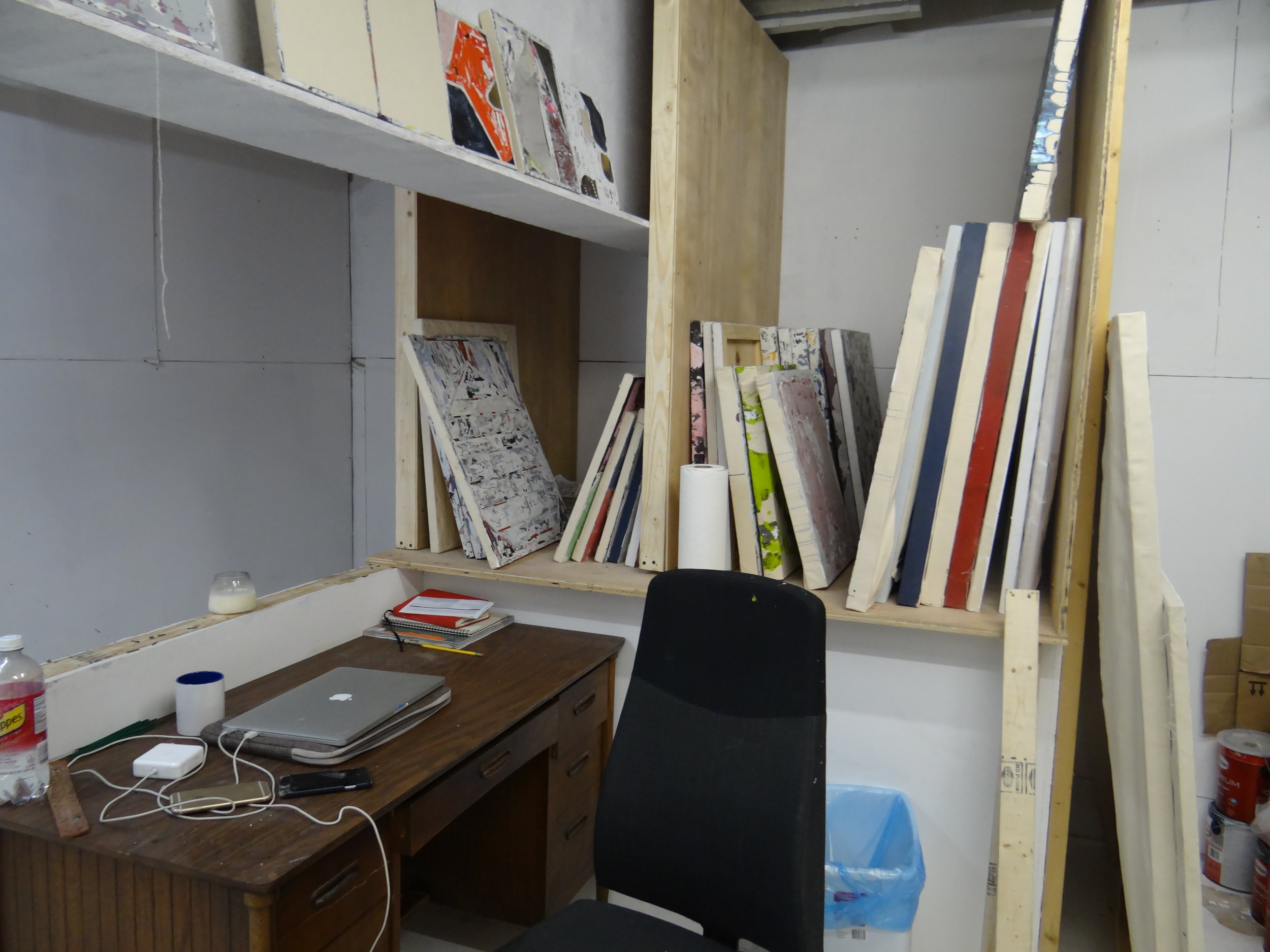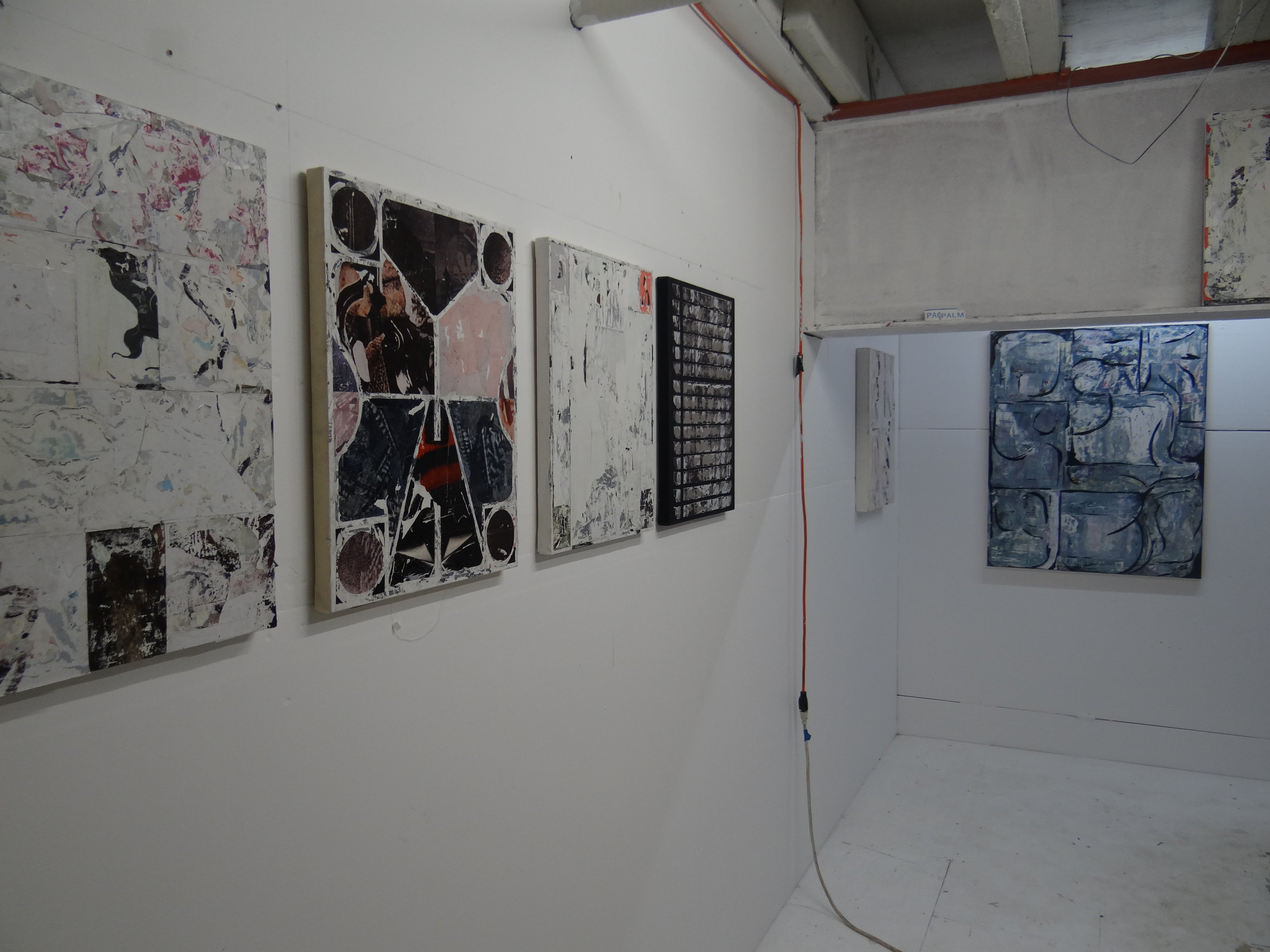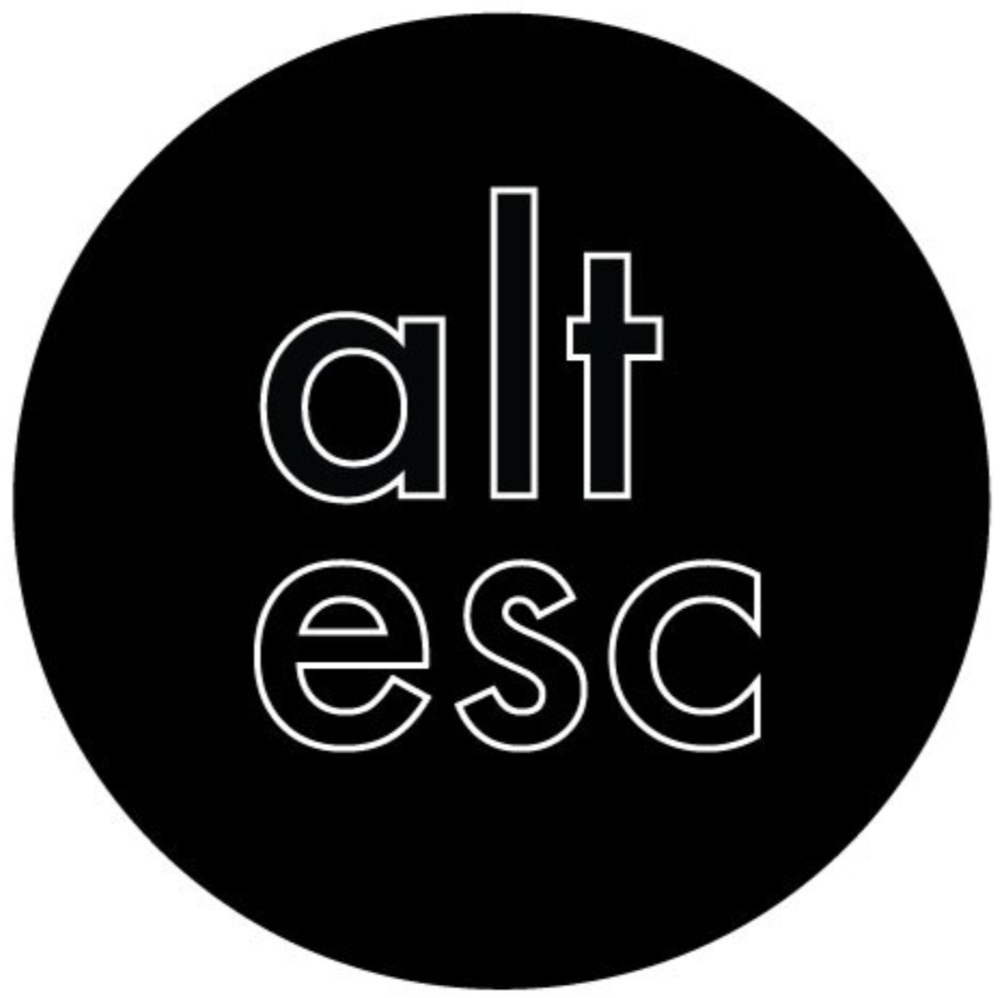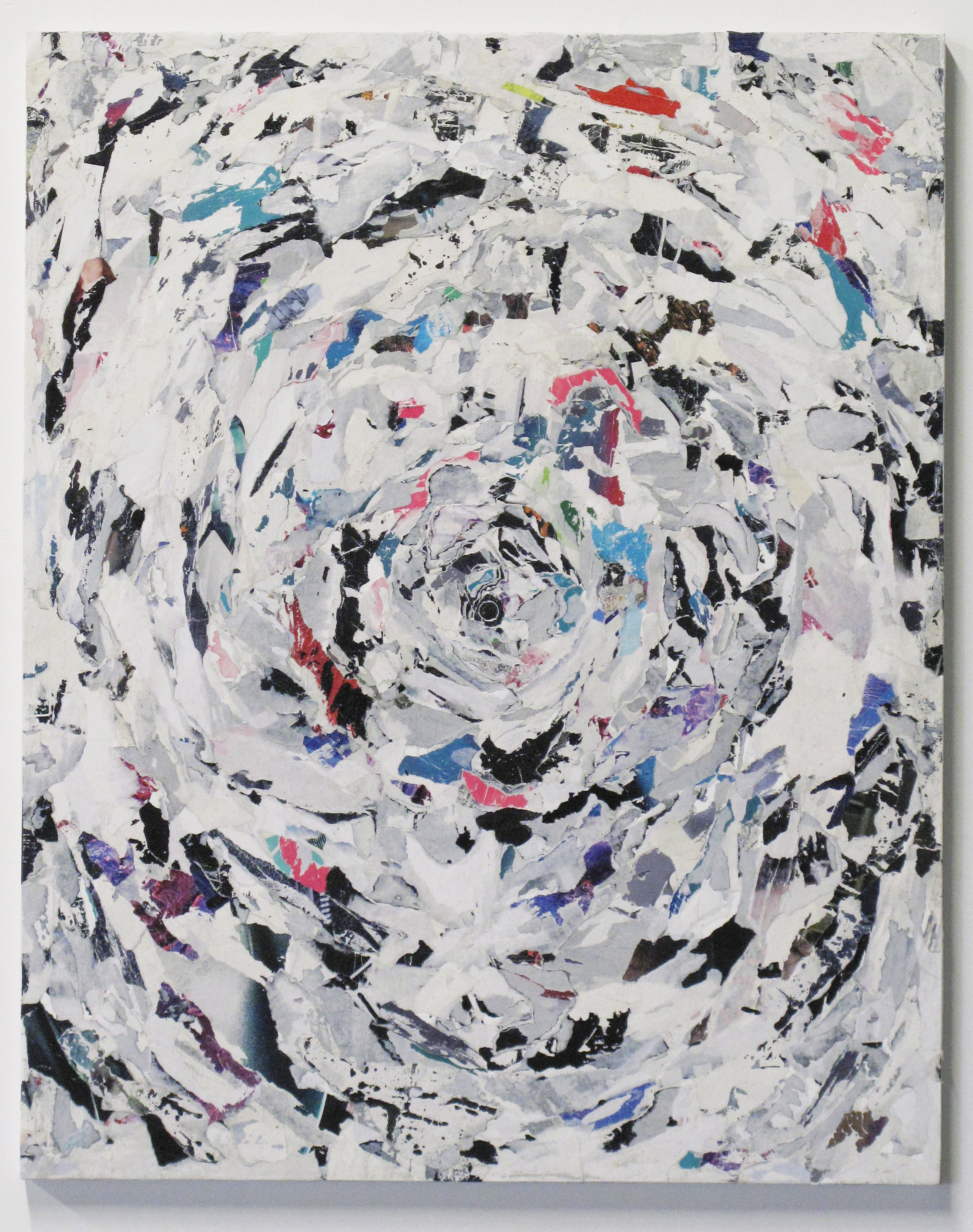andrew Laumann
Andrew Laumann is an artist, working in Brooklyn, New York. Using deconstruction to composite a new whole, his work is a study of materials. It also speculates concepts including (but not limited to) advertising, consumerism, vandalism, and a fetishization of waste. We met up with him at his studio in Brooklyn, where we learned more about his process, interests, and reasons for leaving music behind to pursue art full time. We are excited to showcase his work at an upcoming exhibition at Small Editions, opening February 10th.



How did you end up with a studio at Signal?
Well, back in 2014, I was asked to be in a show there with Jesse Hlebo and Nicholas Gottlund (Demo, May 2014). We became good friends since then. When a room opened up this past August, I decided it was an opportune time to relocate to New York.
Demo (May 2014) at Signal with Andrew Laumann, Jesse Hlebo, and Nicholas Gottlund.
What medium category does your work identify? Are they paintings? Collages? Does that even matter?
I think of them as paintings, but the physical process is in collage. This current body of paintings began in 2013. They came about through a mistake. The destruction of the piece revealed a new technique. I began collecting street posters and building textured surfaces reminiscent of natural weather decay. I wasn't satisfied with a re-performance of simulated conditions; rather I desired to interact with the material in a more painterly fashion.
How do you configure the designs?
I try to keep an honest dialogue with the material. I view the works as performance (but instead of being highly scripted or choreographed, they are like non-actors given a prompt).
Each piece has a life of its own, which plays out through the making of the work. I go in with intention. It doesn’t work out. I fuck it up. Then I work to pull it back from that point. When I lose control, that’s when I know I'm doing something right because it’s beginning to have a life of its own. It’s up to me to nurture it, so it becomes what it is meant to be.
What materials do you use?
My material interest lies in waste. The advertising that engulfs urban environments is my palate. I repossess images pasted onto walls. I also like to keep my materials utilitarian - I get 90% from hardware stores. It's key (to my work) that the materials are simultaneously recognizable and almost indecipherable from non-art objects.
Are the original narratives and depictions of the images you source from important to the conceptualization of the work?
I tend to think adverting doesn’t work on me. (I never think I desire anything being advertised, but perhaps I do subconsciously?) The images, colors, and compositions are a tested and approved aesthetic dialect. Since the days of Mad Men, they have learned to infiltrate the mind. This leads to the synchronicity of a product’s color scheme or design – they (these sexy colored images) are associated with the lifestyle being sold to you.
Untitled (Morpho)
I was originally interested in the material because of it’s correlation between the vandal and the state. The images have an interesting life because they exist in a public place but are known to be illegal. The advertisers post the images (usually images this big are out of public reach and access is restricted), but these are here in your face. The ensuing reaction by the public to vandalize the vandalism is a sort of protest prompt out of Naomi Kliens "No Logo".
On that note, what major themes and concepts are you interested in investigating throughout your work? ( [AND/OR] how entangled should an artist be in the conceptualization of their work?)
I want to destroy the recognizable image. My paintings are a sort of a protest against the image. There is nothing to see but what is there. I'm interested in the pornographic fetishization of decay in modern culture.
With that being said, I see painting as a form of language, and the style, the dialect, and the individual's personal experiences, translate into the work as the accent. It is comparable to the confusion you experience when being surrounded by a language you don’t understand – it takes on a certain wall of sound. Sound is very image based for me (and vice versa). I don’t see my works as melodies but as ambient tones or noise.
What was the inspiration and process behind your plastic works like Sunshine?
I was in Berlin in 2012 and saw a row of plastic dumpsters burned during protests. The plastic had melted some parts more than others. There was an inconsistency in the fire that left some rigidly design elements exposed that mixed in with the goop of plastic. It was an iconic remnant of the strife between the people and the state - the physical scars of an altercation of the environment. I wanted a way to talk about this interaction in a simplified form - a minimalist alter to anarchy. I had an outdoor space at my studio and began collecting discarded plastic crates from around the city and blow torched them onto panels in a painterly method to leave some of the elements of the original material still viewable.
How did Dope Body start? Did you think the band would take off like it did?
The band started as a joke and just kept going… It wasn't supposed to last more than one show. We finally hung it up after 8 years and 8 records, touring the world a few times. I didn't have any expectations in the beginning but my expectations in the end were its downfall. I wasn't doing it for the love of it anymore. I was in it for the obligations to all the people that were working with us. I decided I wanted to completely dedicate myself to my work.
How did you balance making visual art and being in a band?
It's difficult to straddle the two practices, especially given my process as an artist and our circumstance as a band. We never got comfortable and touring was always a struggle. We were stuffed in a van, hung-over, driving all day everyday. I'd come home from two months on the road and would be broke. It was always a game of catch up, financially.
I spent the last summer in Baltimore until I realized I no longer had to stay (given that my obligations to the project were over). I moved to NYC in August to put some fire under my ass and to focus on my artwork more strictly. I had a lot more freedom (being in a cheaper city like Baltimore), but the invaluable presence of being around motivated artists here (in New York) everyday is exactly what I needed.
What are you working on now?
I've had the freedom of not having any specific deadlines in the near future, so I've dedicated the past 6 months onward to experimenting and developing my visual language. I got in a sort of rut earlier this year where I felt like I had figured out my process but was unsatisfied with it. Each new work I've been making is a completely different but intentional attempt. Each piece is a direct influence to the next.
I have a few projects lined up for the spring next year. I've been most interested in showing with other artists to facilitate conversations rather than proclaim solidified statements.





